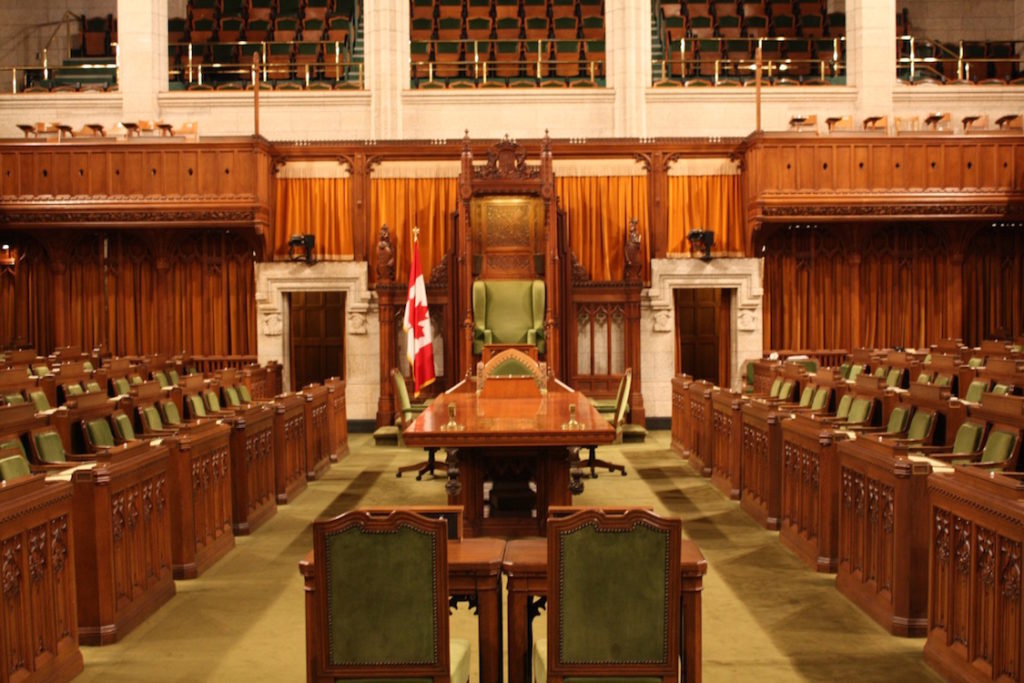Which voting system is best?
When a favourite sports team falls short in the playoffs, fans are quick to find fault with the umpires, the weather, the league – in short, blaming everything the players themselves can’t control.
A similar refrain is often heard after elections. “If only the rules were different, my team would be in a different position today.” The sting of defeat can mix together with a broader desire for better politics in Canada, muddying the calls for electoral reform that follow.
Many Canadians would agree that power should be shared more equitably within Parliament. While our first-past-the-post voting system is easy to use and delivers stable majorities, it distorts the popular vote and contributes to a “winner take all” mentality among politicians that inhibits cooperation.
What’s not clear is which system, or set of rules, should replace first-past-the-post. Those who claim to know what’s best for Canada often have a preferred electoral outcome in mind. In other words, a partisan bias.
Where the parties stand
The day after the election, incoming Prime Minister Justin Trudeau confirmed his promise that 2015 was the last time Canada would vote under a first-past-the-post system. The Liberal Party platform lays out this plan:
“We will convene an all-party Parliamentary committee to review a wide variety of reforms, such as ranked ballots, proportional representation, mandatory voting, and online voting. This committee will deliver its recommendations to Parliament. Within 18 months of forming government, we will introduce legislation to enact electoral reform.”
Advocates for various voting systems are licking their chops. Here at last is an opportunity to fight for their preferred set of rules at the federal level. But UBC political scientist David Moscrop says advocates who focus on a particular system may be putting the cart before the horse.
“How we choose an alternative electoral system, or how we choose whether to keep the current system, is nearly as important as the question of which system we should choose,” says Moscrop. “We must absolutely have the public engaged in this process. It cannot be left to politicians alone, who will have every incentive to opt for a system that benefits them and their party.”
It’s no secret that Greens and New Democrats favour proportional representation systems. If seats were allocated simply on the basis of popular vote, in 2015 the NDP would have received 67 seats out of 338, not 44 – because the party won 19.7 per cent of the popular vote. By the same logic, the Greens would have 11 seats instead of one.
The Greens and NDP further claim that the current system suppresses their vote: if people weren’t afraid of electing Conservatives under first-past-the-post, their seat count would be even higher.
Conservatives, for their part, are quite happy with the way things are. Having united the Reform and PC traditions, built up regional power centres and a highly efficient program for getting their base out to vote, the Conservatives are well equipped to play the game under the existing rules.
The federal Liberals are more complicated. Some caucus members favour proportional systems (see Stphane Dion’s proportional hybrid, called P3). Others recognize they probably owe their seat to first-past-the-post. Still others – including Prime Minister-designate Justin Trudeau – are believed to favour a ranked ballot. The logic for this is simple: Liberals are the natural second choice of voters both to their left and to their right.
Each of these voting systems has benefits and tradeoffs, and each has passionate supporters. In the current political context, electoral reform advocates who push one system or another could spark a partisan proxy war.
Big opportunity, big risk
“It’s obvious that the Liberal Party faces a moral imperative: they must deliver on their promise to address electoral reform,” Moscrop says. “But it should not be left up to Parliament alone. The question needs to be put to the people.”
Moscrop suggests a nonpartisan citizens’ assembly like the one convened in British Columbia in 2004 when voting reform was studied at the provincial level. You can read the B.C. Citizens’ Assembly’s final report to legislators here, which provides an overview of different types of voting systems and important factors to be weighed in picking a new one.
“We should then have a referendum that asks whether a citizen prefers the current system or the recommended alternative,” says Moscrop. “This approach allows for us to have the best of two worlds: substantive citizen engagement and input, and popular ratification.”
What’s the alternative? Well, the worst-case scenario goes something like this:
Imagine voting reform groups launching competing campaigns, each demanding the Liberal government adopt their preferred system. Partisan operatives then pick sides, each seeking to amplify the grassroots effort that most benefits their political party. Outside the walls of Parliament, the public divides into various camps.
Inside Parliament, a committee of MPs picks a system and imposes it by legislation, leading to accusations the government is trying to rig the next election.
Or, recognizing this risk, the government calls a quick referendum with a high bar for success. Everyone squabbles over the wording of the question, voters pick simplicity over uncertainty, and the referendum fails – just like in B.C. (2005 and 2009), Ontario (2007) and PEI (2005).
David Moscrop again: “If we split into opposing teams too soon, we risk torpedoing the whole process. We risk losing a chance at electoral reform for a generation. Perhaps longer. The order in which we do things matters, and we need to start with uniting around a process.”
Conclusion
If electoral reform at the federal level is important to you – as it is to me – I think it’s worth keeping a few things in mind:
-
All voting systems have pros and cons.
-
“Proportional representation” is not the same thing as “electoral reform”. PR or “pro-rep” is a family of voting systems. Using it as a catch-all for changing the voting system is inaccurate and misleading.
-
Canada is a unique country. Huge, sparsely populated, bilingual and multicultural. Systems that work in other countries might have undesired side effects in Canada.
-
Politicians tend to favour voting systems that work to their own advantage. For example, systems that enhance the power of the parties or their leaders.
In the months and years to come, Dogwood Initiative will be active in the national debate around electoral reform. Our supporters are clear in their desire for a better democracy and we owe it to British Columbians to help sort through the options available.
We will consult our organizers and supporters to find out what criteria are most important to them in selecting new rules for voting. In the meantime, Dogwood will not be taking a position in favour of one particular system.

